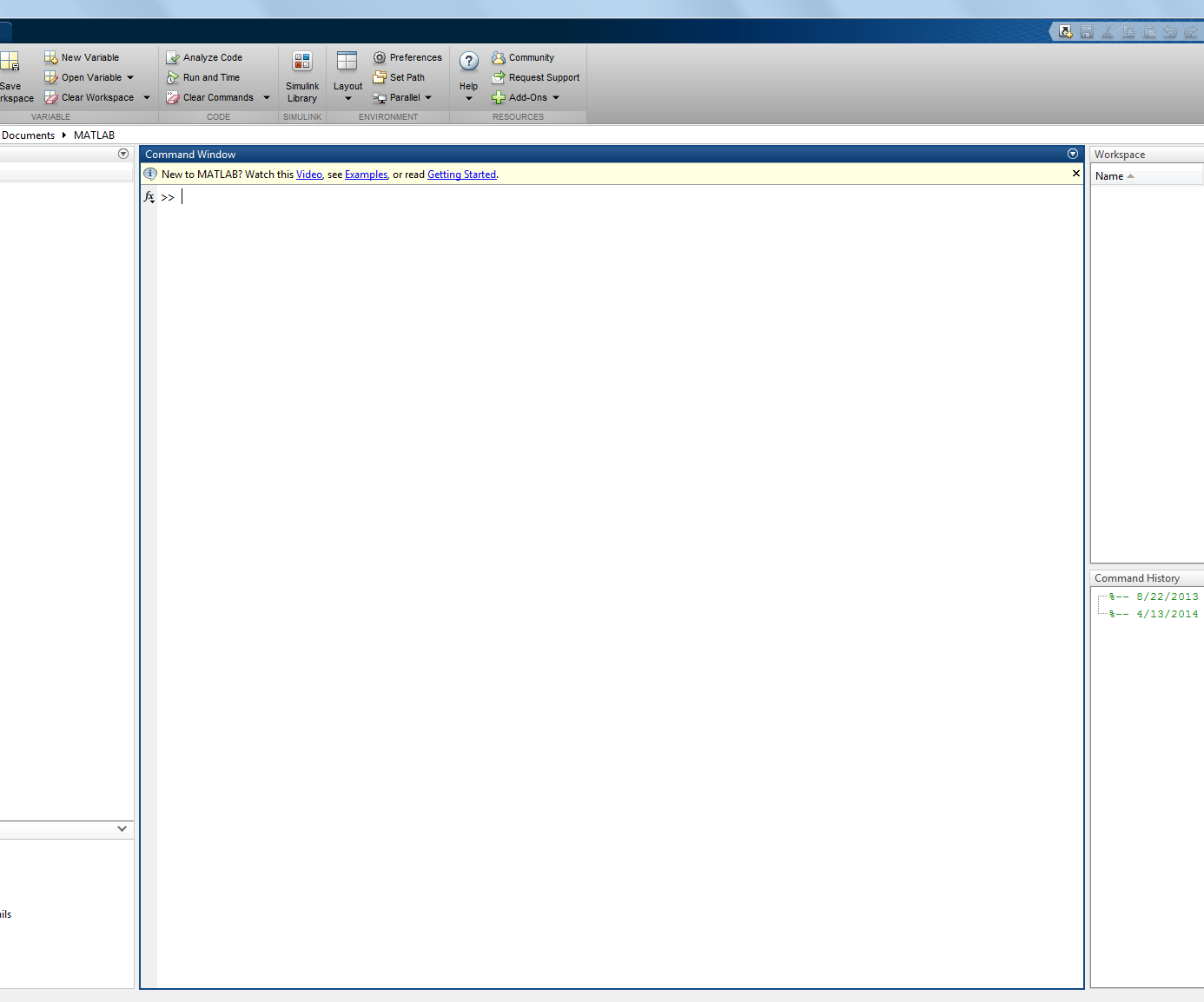

\led_blinkingĬ:\Users\rahul\Documents\MATLAB\MicroshipWP\1.led\led_blinking.X\src>"C:\Program Files\MATLAB\R2013a\bin\win64\gmake" -f led_blinking.mk MULTI_INSTANCE_CODE=0 GENERATE_ASAP2=0 TMW_EXTMODE_TESTING=0 MCHP_AUTO_FLASH=0 # Creating led_blinking.mk from C:\Program Files (x86)\Microchip\MatlabTools\mchp\MCHP_dsPIC.tmf # Processing Template Makefile: C:\Program Files (x86)\Microchip\MatlabTools\mchp\MCHP_dsPIC.tmf # Creating project marker file: rtw_proj.tmw # Writing source file led_blinking_main.c # Writing header file led_blinking_private.h

# Writing header file led_blinking_types.h
#Matlab r2013a create binary code#
# Initial pass through model to cache user defined code On the final production target, then consider increasing the word size to This emulation is helpful when your prototype target and your final
#Matlab r2013a create binary software#
When used,Įxtra software will be generated to force this larger word or multi words to emulate a smaller Warning: The data type "ufix1" uses a word size that is not available on the intended target.įixed-point signals using this data type will be put inside a larger word or multi words. # Using System Target File: C:\Program Files (x86)\Microchip\MatlabTools\mchp\MCHP_dsPIC_stf.tlc # Invoking Target Language Compiler on led_blinking.rtw # Generating code into build folder: C:\Users\rahul\Documents\MATLAB\MicroshipWP\1.led\led_blinking.X\src # Starting build procedure for model: led_blinking Following is the output printed on matlab window :- Microchip Model Check before compilation I am facing compilation issue for the basic led blinking model. With the brain MRI data, you can see the tumor in the temporal lobe that you want to segment.Compilation issue using Matlab 2013a (64 bit version) Hi, I am using Matlab 2013a (64 bit version), Microchip Simulink Blockset v3.30. To improve your view of the data, you can change the background color used in the 3-D display, modify the threshold and opacity of the display, and include orientation axes with the display, as shown in the figure below. For example, if you have metadata that describes the relative size of the voxels, you can specify it in the Spatial Referencing part of the 3-D Display tab in the app toolstrip. You can also customize the display of the volume in the 3-D Display tab in the app toolstrip. In the 3-D Display pane, you can rotate the volume to examine the data from every angle, using the mouse. To determine what you want to segment, explore the volume using the 3-D Display pane and the Slice pane. You can optionally load an existing set of labels into the app using the Open Labels button. To change the color associated with the label, double-click the color square displayed in the Labels pane.

To change the name of the label, double-click the label name. However, to create a binary mask, you must use only one label. You can define multiple labels in the Labels pane. The app also automatically creates a label for the segmentation in the Labels pane, using the default name Label1. In this dataset, the first few slices do not contain images of the brain.

The app displays the number of the slice displayed at the top of the image, for example, 1/155. By default, the Slice pane displays the first slice of your data.


 0 kommentar(er)
0 kommentar(er)
